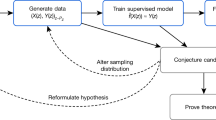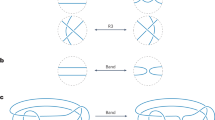Abstract
PROF. PERRY'S syllabus in practical mathematics has now been published two or three years, and the results of actual experience of its working may have some interest. We have in this institute about three hundred students of mathematics, including boys in the day school as well as older evening students, who follow a course on the lines of Prof. Perry's syllabus, and in both classes the adoption of the method has aroused an increased interest in the subject. This increase of interest seems to be due to the fact that the method is essentially experimental as well as deductive. Mathematics is treated as a science rather than, according to a common tradition, as an “arts” subject. The student is taught to investigate the facts for himself by experiment in the form of actual plotting and measurement and numerical calculation, just as in the study of such a science as electricity he investigates a law for himself in the laboratory and, usually at a later stage, proves in his theoretical work that that law follows from his previous knowledge. This is not merely a question of illustrating elementary geometry, but the practice may be carried with advantage into what are usually considered quite advanced parts of his work. However well a student may know the analytical proofs involved, he greatly improves the firmness of his grasp by actually plotting, with various numerical values of the constants, curves to represent such a case, for instance, as the small oscillations of a stiff spring, or the form of a bent beam. In pure mathematics, especially in differential geometry, many examples may be found, and, in fact, the method of conformal representation, which has been so fruitful in the theory of functions and its applications, is really an instance of this method. Besides increasing the average student's interest in his work, these “direct vision” methods, used systematically throughout a student's course, give more solidity and a clearer definition to his ideas than it seems possible to attain by abstract reasoning alone.
This is a preview of subscription content, access via your institution
Access options
Subscribe to this journal
Receive 51 print issues and online access
$199.00 per year
only $3.90 per issue
Buy this article
- Purchase on Springer Link
- Instant access to full article PDF
Prices may be subject to local taxes which are calculated during checkout
Similar content being viewed by others
Author information
Authors and Affiliations
Rights and permissions
About this article
Cite this article
SAXELBY, F. Experimental Mathematics. Nature 66, 30–31 (1902). https://doi.org/10.1038/066030b0
Issue Date:
DOI: https://doi.org/10.1038/066030b0
Comments
By submitting a comment you agree to abide by our Terms and Community Guidelines. If you find something abusive or that does not comply with our terms or guidelines please flag it as inappropriate.



